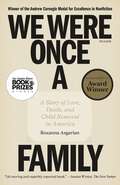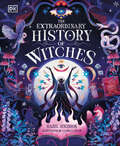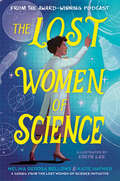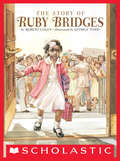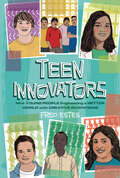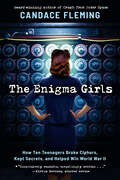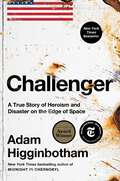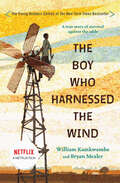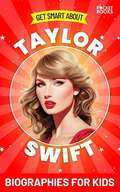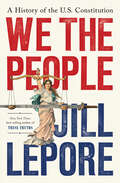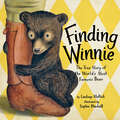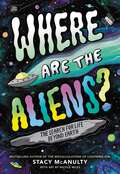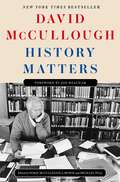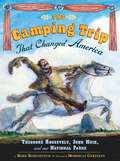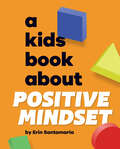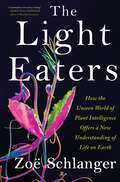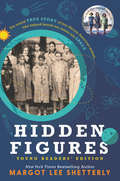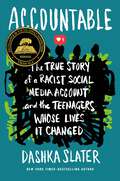Special Collections
2025 National Nonfiction Day
Description: A collection of well-regarded nonfiction books for diverse interests and ages.
- Table View
- List View
Who Is Taylor Swift?
by Kirsten Anderson and Who HqLearn how a young girl who lived on a Christmas tree farm grew up to become one of the most celebrated musical artists of the twenty-first century in this addition to the #1 New York Times bestselling series.
Taylor Swift always knew she wanted to be a country music artist, so at age thirteen, she convinced her parents to move their family out of Pennsylvania to Nashville. As a singer, songwriter, and guitarist, Taylor wrote songs about teenage heartbreak and fitting in with her peers, and she performed these and other tunes at open mic nights and karaoke events.
Breaking into the music industry took longer than she expected because record executives thought there was no place in country music for her songs. But Taylor was fearless and proved them wrong. Since the release of her self-titled debut album in 2006, Taylor Swift has dominated the music charts, reinvented her sound, won numerous awards, shaken off public criticism, and spoken up for herself and others. Whether you're a lifelong Swiftie or someone who just loves learning about musicians, this enchanting book will teach you all about the experiences that helped Taylor Swift become the successful superstar many kids and adults looks up to.
We Were Once a Family
by Roxanna AsgarianA finalist for the 2023 National Book Critics Circle Award
Los Angeles Times Book Prize
A Washington Post best nonfiction book of 2023
Winner of the Carnegie Medal for Excellence in Nonfiction
“A riveting indictment of the child welfare system . . . [A] bracing gut punch of a book.” —Robert Kolker, The Washington Post
“[A] moving and superbly reported book.” —Jessica Winter, The New Yorker
“A harrowing account . . . [and] a powerful critique of [the] foster care system . . . We Were Once a Family is a wrenching book.” —Jennifer Szalai, The New York Times
A New York Times Book Review Editors’ Choice
One of Publishers Weekly's best nonfiction books of 2023
The shocking, deeply reported story of a murder-suicide that claimed the lives of six children—and a searing indictment of the American foster care system.
On March 26, 2018, rescue workers discovered a crumpled SUV and the bodies of two women and multiple children at the bottom of a cliff along the Pacific Coast Highway. Investigators soon concluded that the crash was a murder-suicide, but there was more to the story: Jennifer and Sarah Hart, it turned out, were a white married couple who had adopted six Black children from two different Texas families in 2006 and 2008. Behind the family’s loving facade was an alleged pattern of abuse and neglect that had been ignored as the couple withdrew the children from school and moved west. It soon became apparent that the State of Texas knew all too little about the two individuals to whom it had given custody of six children.
Immersive journalism of the highest order, Roxanna Asgarian’s We Were Once a Family is a revelation of precarious lives; it is also a shattering exposé of the foster care and adoption systems that produced this tragedy. As a journalist in Houston, Asgarian sought out the children’s birth families and put them at the center of the story. We follow the lives of the Harts’ adopted children and their birth parents, and the machinations of the state agency that sent the children far away. Asgarian’s reporting uncovers persistent racial biases and corruption as young people of color are separated from birth parents without proper cause. The result is a riveting narrative and a deeply reported indictment of a system that continues to fail America’s most vulnerable children while upending the lives of their families.
The Extraordinary History of Witches
by Hazel AtkinsonDiscover the spellbinding history of witches in this guide to all things witchcraft for children. Travel through time and across the globe in this book for children aged 8-12 as they uncover bewitching tales of historical witch trials, folklore, and potions.
Featuring immersive storytelling from author Hazel Atkinson and enchanting illustrations from Camelia Pham, this book covers everything from the origin of the word “witch” to the modern-day beliefs of Wiccans. Meet magical women, and hear about different forms of magic, from Ancient Egyptian Heka to South American Brujeria.
This witch book for children offers:
Content by author Hazel Atkinson, whose background is in folklore and myth, that are academically rigorous, age-appropriate, and captivating.
An international approach, looking at the history of witchcraft across the globe and through the ages.
A fresh perspective on how the word “witch” has been used to persecute powerful, talented women through the ages.
This book delves into a variety of topics, such as the ways women have been unfairly treated throughout history, offering a fresh approach to the topic. Subjects such as witch hunts and trials are covered sensitively and appropriately for the age group. With magic, mystery, and a whole lot of history at your fingertips, this book will leave children totally charmed.
The Lost Women of Science
by Katie Hafner and Melina Gerosa BellowsFrom the popular Lost Women of Science podcast, comes an empowering collection that recognizes ten trailblazing female scientists whose lives and works have been lost to history ... until now.
Uncover the truth behind some of the world's greatest accomplishments—and the women who made it happen. For far too long, women in science have been overlooked. But despite the missing pages from the history books, these remarkable ladies conducted groundbreaking experiments, discovered diseases that changed lives, deciphered codes that altered the course of world wars, and so much more. And now, we know their stories.
From the creators of award-nominated Lost Women of Science podcast comes an illuminating and moving portrayal of ten revolutionary women in STEM who dared to break barriers even when no one was watching. Through riveting sketches, rarely-before-seen photos, and insightful stories, unearth the lives and triumphs of these science pioneers whose influence cannot be forgotten.
Tonight in Jungleland
by Peter Ames CarlinA fascinating behind-the-scenes account of the making of Bruce Springsteen’s ground-breaking album, Born to Run – one of the most iconic records in rock history – Tonight in Jungleland combines lush music writing with unprecedented inside access to Springsteen, his bandmates, and the full story behind every song… and coincides with the album’s 50th anniversary in August 2025.
From the opening piano notes of “Thunder Road,” to the final outro of “Jungleland” – with American anthems like “Born to Run” and “Tenth Avenue Freeze Out” in between – Bruce Springsteen’s seminal album, Born to Run, established Springsteen as a creative force in rock and roll. With his back against the wall, he wrote what has been hailed as a perfect album, a defining moment, and a roadmap for what would become a legendary career.
Peter Ames Carlin, whose bestselling biography, Bruce, gave him rare access to Springsteen’s inner circle, now returns with the full story of the making of this epic album. Released in August, 1975, Born to Run now celebrates its 50th anniversary. Carlin reveals a treasure trove of untold stories, detailing the writing and recording of every song, as well as the intense and at times tortuous process that mimicked the fault lines in Springsteen’s psyche and career, even as it revealed the depth of his vision. A must-read for any music fan, Tonight in Jungleland takes us inside a hallowed creative process and lets us experience history.
New York Times Bestseller
Capitalism and Its Critics
by John CassidyA Financial Times Most Anticipated Book of 2025.
A sweeping, dramatic history of capitalism as seen through the eyes of its fiercest critics. At a time when artificial intelligence, climate change, inequality, trade wars, and a right-wing populist backlash to globalization are raising fundamental questions about the economic system, Capitalism and Its Critics provides a kaleidoscopic history of global capitalism, from the East India Company and Industrial Revolution to the digital revolution.
But here John Cassidy, a staff writer at The New Yorker and a Pulitzer Prize finalist, adopts a bold new approach: he tells the story through the eyes of the system’s critics. From the English Luddites who rebelled against early factory automation to communists in Germany and Russia in the early twentieth century, to the Latin American dependistas, the international Wages for Housework campaign of the 1970s, and the modern degrowth movement, the absorbing narrative traverses the globe. It visits with familiar names―Smith, Marx, Luxemburg, Keynes, Polanyi―but also focuses on many less familiar figures, including Flora Tristan, the French proponent of a universal labor union; Thomas Carlyle, the conservative prophet of the moral depredations of the market; John Hobson, the original theorist of imperialism; J. C. Kumarappa, the Indian exponent of Gandhian economics; Eric Williams, the Trinidadian author of a famous thesis on slavery and capitalism; Joan Robinson, the Cambridge economist and critic of Keynes; and Samir Amin, the leftist French-Egyptian economist and analyst of globalization.
Blending rich biography, panoramic history, and lively exploration of economic theories, Capitalism and Its Critics is true big history that illuminates the deep roots of many of the most urgent issues of our time.
The Story of Ruby Bridges
by Robert ColesThe inspirational true story of Ruby Bridges.The year is 1960, and six-year-old Ruby Bridges and her family have recently moved from Mississippi to New Orleans in search of a better life. When a judge orders Ruby to attend first grade at William Frantz Elementary, an all-white school, Ruby must face angry mobs of parents who refuse to send their children to school with her. Told with Robert Coles' powerful narrative and dramatically illustrated by George Ford, Ruby's story of courage, faith, and hope continues to resonate more than 60 years later.
Teen Innovators
by Fred EstesA water purification system made of concrete and the same chemicals that block ultraviolet light in sunscreen. A robot made of PVC pipe that beat a shiny, eleven-thousand-dollar competitor in a robotics contest. An electricity-producing windmill built by a teen who taught himself physics by candlelight.
Teen Innovators: Nine Young People Engineering a Better World with Creative Inventions reveals how people of any age or experience level can create something that changes others' lives through nothing more than hard work, creativity, and inspiration. (Oh, and perhaps a bit of electrical wire, some plastic piping, and a couple tampons.) Utilizing the principles of design thinking, these inventors all tinkered, experimented, and failed—repeatedly—until their inventions worked. The windmill produced light. The water became safe to drink.
Jack Andraka: improved pancreatic cancer test
Gitanjali Rao: device to detect lead in drinking water
William Kamkwamba: improvised electrical generator using windmill in Malawi
Austen Veseliza: digital display glove to aid people with speech impairment
Deepika Kurup: easier, cheaper method to remove toxins from drinking water
Cristian Arcega, Lorenzo Santillan, Oscar Vasquez, Luis Aranda: underwater robot
Each of these stories offers inspiration to the next generation of teen innovators. You don't need a genius-level IQ or the latest and greatest technologies to create something that makes a difference. All you need is an idea and the determination to make it real.
Alberto Salas Plays Paka Paka con la Papa
by Sara Andrea FajardoWhat can a potato do? To Peruvian scientist Alberto Salas, they have the power to change the world. Go on the hunt with Alberto for for wild potatoes before they go extinct in this playful picture book biography, gorgeously illustrated by Caldecott-honoree Juana Martinez-Neal.
High up in the Andes mountains of Peru, agricultural scientist Alberto Salas is on a quest. A quest... for potatoes. Up and down the Andes mountains he goes, playing an epic game of paka paka con la papa, potato hide and seek. These potatoes are special: they have the power to feed the world. Alberto doesn't have a second to waste. The climate is changing and Alberto must find each and every one to save them before they go extinct. The game is on! Alberto races and peers and prods. Drives and trods and climbs. Will he find the potato he seeks? Will he win the game of paka paka con la papa?
Author Sara Andrea Fajardo’s spirited biography about “the godfather of potatoes” is paired with lush art by Caldecott-honoree Juana Martinez-Neal to capture how celebrated scientist Alberto Salas brings joy, curiosity, and fun to his very important, life-changing work.
The Enigma Girls (Scholastic Focus)
by Candace FlemingWith numerous starred reviews and accolades, from award-winning author Candace Fleming, comes the powerful and fascinating story of the brave and dedicated young women who helped turn the tides of World War II for the Allies, with their hard work and determination at Bletchley Park.
"Events are brought to dramatic life through a treasure trove of photographs--which show the goings-on at Bletchley and the sobering progress of the war--and through the author's meticulous research." -- The New York Times Book Review
"You are to report to Station X at Bletchley Park, Buckinghamshire, in four days time....That is all you need to know." This was the terse telegram hundreds of young women throughout the British Isles received in the spring of 1941, as World War II raged. As they arrived at Station X, a sprawling mansion in a state of disrepair surrounded by Spartan-looking huts with little chimneys coughing out thick smoke-these young people had no idea what kind of work they were stepping into. Who had recommended them? Why had they been chosen?
Most would never learn all the answers to these questions. Bletchley Park was a well-kept secret during World War II, operating under the code name Station X. The critical work of code-cracking Nazi missives that went on behind its closed doors could determine a victory or loss against Hitler's army. Amidst the brilliant cryptographers, flamboyant debutantes, and absent-minded professors working there, it was teenaged girls who kept Station X running. Some could do advanced math, while others spoke a second language. They ran the unwieldy bombe machines, made sense of wireless sound waves, and sorted the decoded messages. They were expected to excel in their fields and most importantly: know how to keep a secret.
Candace Fleming is the award-winning and highly acclaimed author of Crash from Outer Space, The Curse of the Mummy, and many other nonfiction books for young readers. With her canny and compelling narrative voice she makes history come alive. The recipient of five starred reviews, and thick with tension and suspense, The Enigma Girls is an extraordinary and relatively unknown story of World War II that will fascinate readers who will be thrilled to see young people playing such an important role in the wartime effort.
America, América
by Greg GrandinA 2025 Kirkus Prize finalist in Nonfiction • Shortlisted for the 2025 Cundill History Prize
“An extraordinarily ambitious book . . . America, América reads at times as the historical equivalent of the great epic novels of Gabriel García Márquez.” —Irish Times
From the Pulitzer Prize–winning historian, the first comprehensive history of the Western Hemisphere, a sweeping five-century narrative of North and South America that redefines our understanding of both.
The story of how the United States&’ identity was formed is almost invariably told by looking east to Europe. But as Greg Grandin vividly demonstrates, the nation’s unique sense of itself was in fact forged facing south toward Latin America. In turn, Latin America developed its own identity in struggle with the looming colossus to the north. In this stunningly original reinterpretation of the New World, Grandin reveals how North and South emerged from a constant, turbulent engagement with each other.
America, América traverses half a millennium, from the Spanish Conquest—the greatest mortality event in human history—through the eighteenth-century wars for independence, the Monroe Doctrine, the coups and revolutions of the twentieth century, and beyond. Grandin shows, among other things, how in response to U.S. interventions, Latin Americans remade the rules, leading directly to the founding of the United Nations; and how the Good Neighbor Policy allowed FDR to assume the moral authority to lead the fight against world fascism.
Grandin’s book sheds new light on well-known historical figures like Bartolomé de las Casas, Simón Bolívar, and Woodrow Wilson, as well as lesser-known actors such as the Venezuelan Francisco de Miranda, who almost lost his head in the French Revolution and conspired with Alexander Hamilton to free America from Spain; the Colombian Jorge Gaitán, whose unsolved murder inaugurated the rise of Cold War political terror, death squads, and disappearances; and the radical journalist Ernest Gruening, who, in championing non-interventionism in Latin America, helped broker the most spectacularly successful policy reversal in United States history.
This is a monumental work of scholarship that will fundamentally change the way we think of Spanish and English colonialism, slavery and racism, and the rise of universal humanism. At once comprehensive and accessible, America, América shows that centuries of bloodshed and diplomacy not only helped shape the political identities of the United States and Latin America but also the laws, institutions, and ideals that govern the modern world. In so doing, Grandin argues that Latin America’s deeply held culture of social democracy can be an effective counterweight to today’s spreading rightwing authoritarianism. A culmination of a decades-long engagement with hemispheric history, drawing on a vast array of sources, and told with authority and flair, this is a genuinely new history of the New World.
New York Times Bestseller•
The Anxious Generation
by Jonathan HaidtFrom New York Times bestselling coauthor of The Coddling of the American Mind, an essential investigation into the collapse of youth mental health—and a plan for a healthier, freer childhood.
After more than a decade of stability or improvement, the mental health of adolescents plunged in the early 2010s. Rates of depression, anxiety, self-harm, and suicide rose sharply, more than doubling on many measures. Why?
In The Anxious Generation, social psychologist Jonathan Haidt lays out the facts about the epidemic of teen mental illness that hit many countries at the same time. He then investigates the nature of childhood, including why children need play and independent exploration to mature into competent, thriving adults. Haidt shows how the “play-based childhood” began to decline in the 1980s, and how it was finally wiped out by the arrival of the “phone-based childhood” in the early 2010s. He presents more than a dozen mechanisms by which this “great rewiring of childhood” has interfered with children’s social and neurological development, covering everything from sleep deprivation to attention fragmentation, addiction, loneliness, social contagion, social comparison, and perfectionism. He explains why social media damages girls more than boys and why boys have been withdrawing from the real world into the virtual world, with disastrous consequences for themselves, their families, and their societies.
Most important, Haidt issues a clear call to action. He diagnoses the “collective action problems” that trap us, and then proposes four simple rules that might set us free. He describes steps that parents, teachers, schools, tech companies, and governments can take to end the epidemic of mental illness and restore a more humane childhood.
Haidt has spent his career speaking truth backed by data in the most difficult landscapes—communities polarized by politics and religion, campuses battling culture wars, and now the public health emergency faced by Gen Z. We cannot afford to ignore his findings about protecting our children—and ourselves—from the psychological damage of a phone-based life.
New York Times Bestseller
Challenger
by Adam HigginbothamWinner of the 2024 National Book Critics Circle Award in Nonfiction • Winner of the 2024 Kirkus Nonfiction Prize • Shortlisted for the 2025 Andrew Carnegie Medal for Excellence in Nonfiction • A New York Times Notable Book of 2024
“Stunning…A heart-pounding thriller…Challenger is a remarkable book.” —The Atlantic
“Devastating…A universal story that transcends time.” —The New York Times
“Dramatic…a moving narrative.” —The Wall Street Journal
From the New York Times bestselling author of Midnight in Chernobyl comes the definitive, “compelling, and exhaustively researched” (The Washington Post) minute-by-minute account of the Challenger disaster, based on fascinating and new archival research—a riveting history that reads like a thriller.
On January 28, 1986, just seventy-three seconds into flight, the space shuttle Challenger broke apart over the Atlantic Ocean, killing all seven people on board. Millions of Americans witnessed the tragic deaths of the crew, which included New Hampshire schoolteacher Christa McAuliffe. Like the assassination of JFK, the Challenger disaster is a defining moment in 20th-century history—one that forever changed the way America thought of itself and its optimistic view of the future. Yet the full story of what happened, and why, has never been told.
Based on extensive archival research and meticulous, original reporting, Challenger: A True Story of Heroism and Disaster on the Edge of Space follows a handful of central protagonists—including each of the seven members of the doomed crew—through the years leading up to the accident, and offers a detailed account of the tragedy itself and the investigation afterward. It’s a compelling tale of ambition and ingenuity undermined by political cynicism and cost-cutting in the interests of burnishing national prestige; of hubris and heroism; and of an investigation driven by leakers and whistleblowers determined to bring the truth to light. Throughout, there are the ominous warning signs of a tragedy to come, recognized but then ignored, and later hidden from the public. Higginbotham reveals the history of the shuttle program and the lives of men and women whose stories have been overshadowed by the disaster, as well as the designers, engineers, and test pilots who struggled against the odds to get the first shuttle into space.
A masterful blend of riveting human drama and fascinating and absorbing science, Challenger identifies a turning point in history—and brings to life an even more complex and astonishing story than we remember.
Where Have All the Birds Gone?
by Rebecca E. HirschBirds are disappearing. Birds are nature's essential workers, and they are crucial members of ecosystems around the world. Hummingbirds pollinate our flowers; cardinals munch on beetles, grasshoppers, and other pests that damage crops; owls eat rodents that can spread disease; vultures clean up roadkill and other waste. Beyond their practical aspects, birds bring us joy through their songs and beautiful feathers. But since 1970, nearly 30 percent of all birds in the United States and Canada have vanished. Scientists are scrambling to figure out what may be causing such a drastic decline. The answer: humans. City lights and tall glass skyscrapers disorient migrating birds. Domesticated cats prowling outdoors kill billions of birds each year. Pesticides contaminate fish and insects, which are then consumed by birds of prey. And climate change might disrupt and even wipe out feeding grounds for entire species. Discover the vast impacts birds have on ecosystems, food systems, and human communities, and learn more about what scientists are doing to protect them. “Never have my astonishment, wonder, and admiration been so stirred as when I have witnessed these birds drop from their course like meteors from heaven.” —Simon Pokagon, Potawatomi tribal leader “In pushing other species to extinction, humanity is busy sawing off the limb on which it is perched.” — American biologist Paul R. Ehrlich “There’s something everyone can do in their lives and in their communities to make it a better place for birds and people.” — Gary Langham, chief scientist, National Audubon Society
The Boy Who Harnessed the Wind
by William Kamkwamba and Bryan MealerNew York Times Bestseller • Now a Netflix film starring and directed by Chiwetel Ejiofor! A gripping memoir of survival and perseverance about the heroic young inventor who brought electricity to his Malawian village.When a terrible drought struck William Kamkwamba's tiny village in Malawi, his family lost all of the season's crops, leaving them with nothing to eat and nothing to sell. William began to explore science books in his village library, looking for a solution. There, he came up with the idea that would change his family's life forever: he could build a windmill. Made out of scrap metal and old bicycle parts, William's windmill brought electricity to his home and helped his family pump the water they needed to farm the land.Retold for a younger audience, this exciting memoir shows how, even in a desperate situation, one boy's brilliant idea can light up the world. Complete with photographs, illustrations, and an epilogue that will bring readers up to date on William's story, this is the perfect edition to read and share with the whole family.
Get Smart About Taylor Swift
by Adam KentGet ready to be inspired by the remarkable life of Taylor Swift! Discover how Taylor's passion for music transformed her from a small-town girl with a guitar into a global superstar. From her chart-topping albums to her fearless advocacy for artists' rights, her impact on the music industry and beyond is undeniable. Taylor's story is one of resilience, empowerment, and staying true to oneself. Get smart about Taylor Swift's incredible journey and how she became the unstoppable force she is today. It's time to dream big and be empowered by Taylor Swift's story!
We the People
by Jill Lepore"[Lepore's] 15th book, We the People, a history of the U.S. Constitution, may be her best yet, a capacious work that lands at the right moment, like a life buoy, as our ship of state takes on water." —Hamilton Cain, Los Angeles Times
From the best-selling author of These Truths comes We the People, a stunning new history of the U.S. Constitution, for a troubling new era.
The U.S. Constitution is among the oldest constitutions in the world but also one of the most difficult to amend. Jill Lepore, Harvard professor of history and law, explains why in We the People, the most original history of the Constitution in decades—and an essential companion to her landmark history of the United States, These Truths.
Published on the occasion of the 250th anniversary of the nation’s founding—the anniversary, too, of the first state constitutions—We the People offers a wholly new history of the Constitution. "One of the Constitution’s founding purposes was to prevent change," Lepore writes. "Another was to allow for change without violence." Relying on the extraordinary database she has assembled at the Amendments Project, Lepore recounts centuries of attempts, mostly by ordinary Americans, to realize the promise of the Constitution. Yet nearly all those efforts have failed. Although nearly twelve thousand amendments have been introduced in Congress since 1789, and thousands more have been proposed outside its doors, only twenty-seven have ever been ratified. More troubling, the Constitution has not been meaningfully amended since 1971. Without recourse to amendment, she argues, the risk of political violence rises. So does the risk of constitutional change by presidential or judicial fiat.
Challenging both the Supreme Court’s monopoly on constitutional interpretation and the flawed theory of "originalism," Lepore contends in this "gripping and unfamiliar story of our own past" that the philosophy of amendment is foundational to American constitutionalism. The framers never intended for the Constitution to be preserved, like a butterfly, under glass, Lepore argues, but expected that future generations would be forever tinkering with it, hoping to mend America by amending its Constitution through an orderly deliberative and democratic process.
Lepore’s remarkable history seeks, too, to rekindle a sense of constitutional possibility. Congressman Jamie Raskin writes that Lepore "has thrown us a lifeline, a way of seeing the Constitution neither as an authoritarian straitjacket nor a foolproof magic amulet but as the arena of fierce, logical, passionate, and often deadly struggle for a more perfect union." At a time when the Constitution’s vulnerability is all too evident, and the risk of political violence all too real, We the People, with its shimmering prose and pioneering research, hints at the prospects for a better constitutional future, an amended America.
New York Times Bestseller
Finding Winnie
by Lindsay MattickThe remarkable true story of the bear who inspired Winnie-the-Pooh.
During World War I, Captain Harry Colebourn, a Canadian veterinarian on his way to serve with cavalry units in Europe, rescued a bear cub in White River, Ontario. He named the bear Winnie, after his hometown of Winnipeg, and he took the bear to war.
Harry Colebourn's real-life great-granddaughter Lindsay Mattick recounts their incredible journey, from a northern Canadian town to a convoy across the ocean to an army base in England . . . and finally to the London Zoo, where Winnie made a new friend: a boy named Christopher Robin.
Gentle yet haunting illustrations by acclaimed illustrator Sophie Blackall bring the wartime era to life, and are complemented by photographs and ephemera from the Colebourn family archives.
Where Are the Aliens?
by Stacy McAnultyA fun-filled, highly illustrated, science-based exploration into one of the universe’s greatest mysteries—does life exist beyond Earth?—from bestselling and award-winning author Stacy McAnulty.
Spoiler: Scientists haven’t discovered life beyond Earth, not even a single teeny-tiny organism. But there’s a whole lot of outer space, and humans have searched only a fraction of a fraction of it. So do you believe in the possibility of life out there? Or do you think Earth is perfectly unique in its ability to grow organisms?
Where Are the Aliens? takes readers on a journey of theories and discoveries, from the big bang and primordial soup, to how the ancient Greeks considered the cosmos, to the technology used today to listen and (possibly!) communicate with far-off exoplanets. Packed with playful illustrations and fascinating factoids, this is the perfect book for anyone who has ever looked up and asked, "What's out there?"
History Matters
by David McCulloughIn this posthumous collection of thought-provoking essays—many never published before—Pulitzer Prize–winning historian and bestselling author David McCullough affirms the value of history, how we can be guided by its lessons, and the enduring legacy of American ideals.
History Matters brings together selected essays by beloved historian David McCullough, some published here for the first time, written at different points over the course of his long career but all focused on the subject of his lifelong passion: the importance of history in understanding our present and future.
Edited by McCullough’s daughter, Dorie McCullough Lawson, and his longtime researcher, Michael Hill, History Matters is a tribute to a master historian and offers fresh insights into McCullough’s enduring interests and writing life. The book also features a foreword by Jon Meacham.
McCullough highlights the importance of character in political leaders, with Harry Truman and George Washington serving as exemplars of American values like optimism and determination. He shares his early influences, from the books he cherished in his youth to the people who mentored him. He also pays homage to those who inspired him, such as writer Paul Horgan and painter Thomas Eakins, illustrating the diverse influences on his writing as well as the influence of art.
Rich with McCullough’s signature grace, curiosity, and narrative gifts, these essays offer vital lessons in viewing history through the eyes of its participants, a perspective that McCullough believed was crucial to understanding the present as well as the past. History Matters is testament to McCullough’s legacy as one of the great storytellers of this nation’s history and of the lasting promise of American ideals.
New York Times Bestseller
The Camping Trip that Changed America
by Barb RosenstockCaldecott medalist Mordicai Gerstein captures the majestic redwoods of Yosemite in this little-known but important story from our nation's history. In 1903, President Theodore Roosevelt joined naturalist John Muir on a trip to Yosemite. Camping by themselves in the uncharted woods, the two men saw sights and held discussions that would ultimately lead to the establishment of our National Parks.
Kids Book About Positive Mindset, A
by Erin SantamariaBuilding a positive mindset is the key to cultivating healthy thoughts! Each of us thinks thousands of thoughts every single day. That's pretty amazing! But … that doesn't mean every thought is helpful. In fact, some of them can be pretty harmful. So, what do we do?
This book is all about building up a positive mindset and how to manage your thoughts. The more we push back on the negative ones, the less powerful they are, which gives us lots of room for positive growth!
The Light Eaters
by Zoë SchlangerThe New Yorker’s Best Books of 2024 • TIME’s 10 Best Nonfiction Books of 2024 • New York Magazine’s 10 Best Books of the Year • Washington Post’s 50 Notable Works of Nonfiction of 2024 • Smithsonian’s 10 Best Science Books of the Year • A Best Book of the Year: Boston Globe, Scientific American, New York Public Library, Christian Science Monitor, Library Journal, and Publishers Weekly • An Amazon Best Nonfiction Book of the YearLonglisted for the National Book Critics Circle Nonfiction Prize • Finalist for the Los Angeles Times Book Prize • Winner of the National Outdoor Book Award for Natural History
“A masterpiece of science writing.” –Robin Wall Kimmerer, author of Braiding Sweetgrass
“Mesmerizing, world-expanding, and achingly beautiful.” –Ed Yong, author of An Immense World
“Rich, vital, and full of surprises. Read it!” –Elizabeth Kolbert, author of Under a White Sky and The Sixth Extinction
Award-winning Atlantic staff writer Zoë Schlanger delivers a groundbreaking work of popular science that probes the hidden world of the plant kingdom, “destabilizing not just how we see the green things of the world but also our place in the hierarchy of beings, and maybe the notion of that hierarchy itself.” (The New Yorker)
It takes tremendous biological creativity to be a plant. To survive and thrive while rooted in a single spot, plants have adapted ingenious methods of survival. In recent years, scientists have learned about their ability to communicate, recognize their kin and behave socially, hear sounds, morph their bodies to blend into their surroundings, store useful memories that inform their life cycle, and trick animals into behaving to their benefit, to name just a few remarkable talents.
The Light Eaters is a deep immersion into the drama of green life and the complexity of this wild and awe-inspiring world that challenges our very understanding of agency, consciousness, and intelligence. In looking closely, we see that plants, rather than imitate human intelligence, have perhaps formed a parallel system. What is intelligent life if not a vine that grows leaves to blend into the shrub on which it climbs, a flower that shapes its bloom to fit exactly the beak of its pollinator, a pea seedling that can hear water flowing and make its way toward it?
Zoë Schlanger takes us across the globe, digging into her own memories and into the soil with the scientists who have spent their waking days studying these amazing entities up close. What can we learn about life on Earth from the living things that thrive, adapt, consume, and accommodate simultaneously? More important, what do we owe these life forms once we come to understand their rich and varied abilities? Examining the latest epiphanies in botanical research, Schlanger spotlights the intellectual struggles among the researchers conceiving a wholly new view of their subject, offering a glimpse of a field in turmoil as plant scientists debate the tenets of ongoing discoveries and how they influence our understanding of what a plant is. We need plants to survive. But what do they need us for—if at all?
An eye-opening and informative look at the ecosystem we live in, this book challenges us to rethink the role of plants—and our own place—in the natural world.
Hidden Figures
by Margot Lee ShetterlyNew York Times bestselling author Margot Lee Shetterly's book is now available in a new edition perfect for young readers. This is the amazing true story of four African-American female mathematicians at NASA who helped achieve some of the greatest moments in our space program.
Before John Glenn orbited the earth, or Neil Armstrong walked on the moon, a group of dedicated female mathematicians known as "human computers" used pencils, slide rules, and adding machines to calculate the numbers that would launch rockets, and astronauts, into space.
This book brings to life the stories of Dorothy Vaughan, Mary Jackson, Katherine Johnson, and Christine Darden, four African-American women who lived through the civil rights era, the Space Race, the Cold War, and the movement for gender equality, and whose work forever changed the face of NASA and the country.
Accountable
by Dashka SlaterWhen a high school student started a private Instagram account that used racist and sexist memes to make his friends laugh, he thought of it as “edgy” humor. Over time, the edge got sharper. Then a few other kids found out about the account. Pretty soon, everyone knew.
Ultimately no one in the small town of Albany, California, was safe from the repercussions of the account’s discovery. Not the girls targeted by the posts. Not the boy who created the account. Not the group of kids who followed it. Not the adults—educators and parents—whose attempts to fix things too often made them worse.
In the end, no one was laughing. And everyone was left asking: Where does accountability end for online speech that harms? And what does accountability even mean?
Award-winning and New York Times–bestselling author Dashka Slater has written a must-read book for our era that explores the real-world consequences of online choices.

